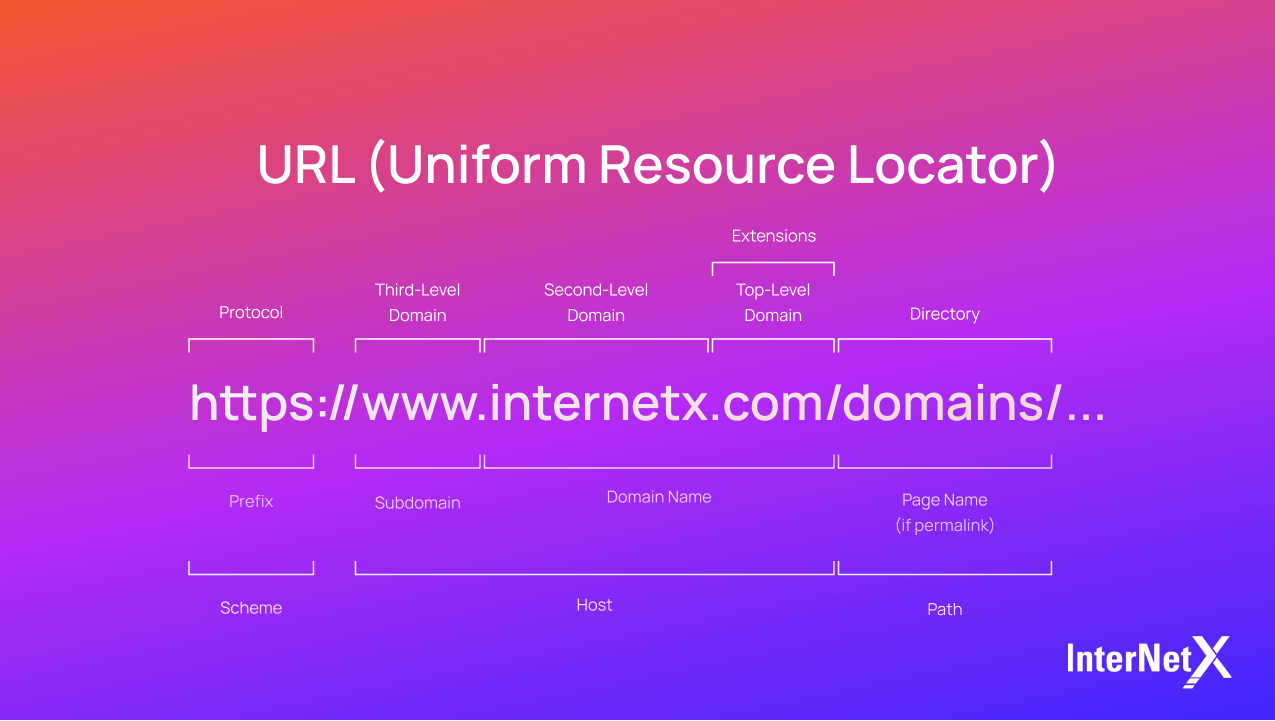
Fully qualified domain name | Definition, structure, syntax and examples

There is much more behind a domain than one imagines. They conceal a unique technical cosmos. Their resolution in the domain name system (DNS) is a complex process, as each computer, each domain and each IP address must be unambiguously identifiable. How does this work? This is where the so-called fully qualified domain name (short FQDN) comes into play.
Published by

Carina Prüll
Date
The term fully qualified domain refers to a domain name that fully specifies the unique and exact location of a domain name within the DNS. The DNS provides the syntax. An FQDN is made up of individual labels that are each delimited by a dot and represent the different levels of the FQDN.
[hostname].[domain].[tld] -> [www].[internetx].[com]
The FQDN is relevant whenever a connection to the host is established. The DNS server resolves the hostname to its IP address by querying the DNS database. So, an FQDN shows the absolute path to a host and displays its IP address in a complete form that is legible to users.
There are a few rules for these so-called “absolute addresses”
- a maximal length of 255 characters
- only numbers, letters and hyphens are allowed
- a number or letter must take the first position of each label
Find perfect domains
Find perfect domains
How is a fully qualified domain name structured?
The hierarchy levels of an FQDN are read from right to left. The root label, also known as the null label, takes the highest hierarchy level and is therefore, as the name suggests, the root of the DNS system. It consists of an empty string and is indicated with a simple full stop. As all browsers now add this dot automatically, users no longer need to enter it.
The further right it is positioned, the higher the level held in the DNS. So the domain holds a higher level than a subdomain.

Root domain
While most people are aware of the reading direction for domain names, the root domain usually remains hidden. It is the basis of the DNS system and is also called null or root label. It is made up of an empty zero-length string consisting of a single octet of zeros. In an FQDN, which strictly follows syntax, it is simply indicated by a dot.
Technically, a top-level domain is therefore in actual fact also a subdomain of the root domain. The root domain itself is automatically added by browsers, which is why they are generally not included in the FQDN.
Top-level domain
In our example, the top-level domain is “.com“. Under this domain extension, the actual desired domain name can be selected in accordance with the guidelines of the respective registry.
Second-level domain
The second-level domain constitutes the address referred to as “domain”. Occasionally, the registry specifies that the second-level domain is predetermined and the selectable name is located on the third level – as is the case with .uk domains. Under .uk, domains can only be registered under the extensions .co.uk, .org.uk etc. but not directly under .uk. The same applies to domains under the Australian top-level domain. Starting March 2022, it will be possible to register second-level domains as domain names directly under .au. Until then, only third-level registrations are possible, e.g. under .com.au.
Hostname
As mentioned before, FQDNs are read from right to left. Between the second-level domain and the hostname, further subdomains may be included, numbered consecutively as third-level domain, fourth-level domain and so on. Farthest left, the hostname follows at the end. In our examplehttps://www.internetx.com/en/domains-and-dns-services/, the hostname is “www.” So, while a host name is always a subdomain, a subdomain is not necessarily already the hostname.
What is the difference between FQDN, FQHN and PQDN?
Via a fully qualified hostname (FQHN), a query reaches a unique and unambiguously identifiable computer. Its address is indicated through an IP or an FQDN.
An example
The computer with the name “mycomputer” can either be reached via the FQDN mycomputer.internetx.com or via an IP address, such as the fictive example 85.236.36.86.
By contrast, the partially qualified domain name (PQDN) is a relative name for a domain. It does not provide the complete path to the top-level domain. The name “mycomputer” is the PQDN in our example mycomputer.internetx.com.
A tip for further reading
3 domain strategies for your multilingual website architecture in our blog article “Domains for Multilingual Websites | Strategy & Tips”.
Looking for interesting domains to add to your portfolio? Don’t have an AutoDNS account yet? You should get one today.
Domain Management with AutoDNS






